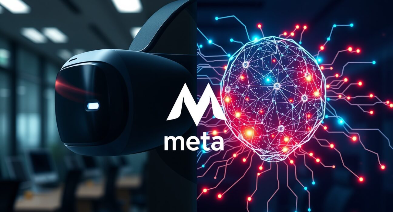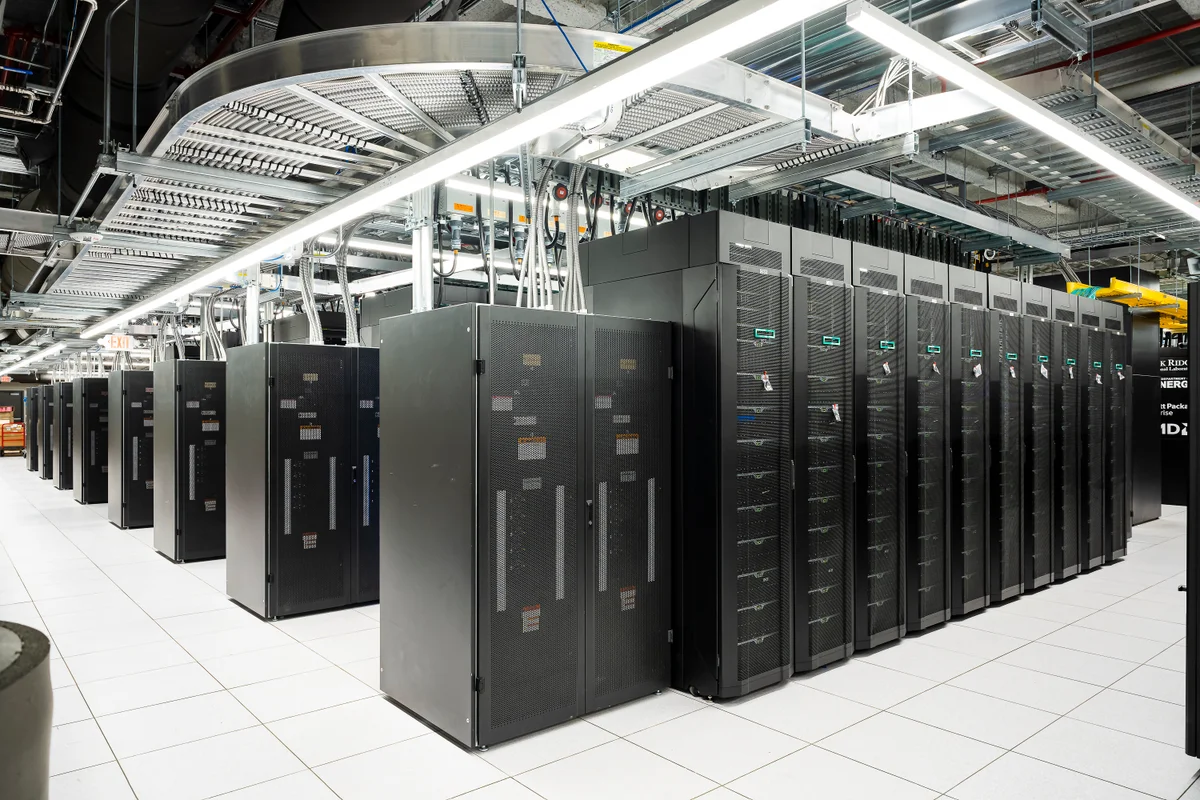Introduction
Supercomputers, the pinnacle of computational technology, have revolutionized scientific research across numerous fields. Defined by their exceptional processing power, these machines can perform complex calculations at speeds unattainable by conventional computers. The journey of supercomputers began in the 1960s with the advent of machines like the CDC 6600, which was the fastest computer of its time. Today, supercomputers have evolved into essential tools for tackling some of the most intricate problems in science and engineering, offering unprecedented capabilities to simulate, analyze, and predict complex phenomena. This article explores how supercomputers are accelerating scientific research, delving into their architecture, applications across various fields, technological advancements, and future directions.
The Architecture of Supercomputers
Supercomputers are distinguished by their unique architecture designed to handle vast amounts of data and perform trillions of calculations per second. The core components of a supercomputer include processors, memory, storage, and networking. High-performance processors, often numbering in the tens of thousands, work in parallel to execute complex computations swiftly. Memory is another crucial component, with supercomputers equipped with immense amounts of RAM to store and quickly access data during calculations. Storage systems in supercomputers are designed to handle petabytes of data, ensuring efficient read and write operations. Networking interconnects all these components, enabling seamless communication and data transfer. Modern supercomputers like Summit and Fugaku boast petascale and exascale capabilities, pushing the boundaries of what can be achieved in scientific research.
Types of supercomputers
Supercomputers may be divided into the following classes and types:
- Tightly connected clusters: These are groupings of interconnected computers that collaborate to solve a shared challenge. There are four approaches to establishing clusters for connecting these computers. This results in four cluster types: two-node clusters, multi-node clusters, director-based clusters, and massively parallel clusters.
- Supercomputers with vector processors: This occurs when the CPU can process a full array of data items simultaneously instead of working on each piece individually. This offers a sort of parallelism in which all array members are processed simultaneously. Such supercomputer processors are stacked in arrays that can simultaneously process many data items.
- Special-purpose computers: These are intended for a particular function and can’t be used for anything else. They are meant to address a specific problem. These systems devote their attention and resources to resolving the given challenge. The IBM Deep Blue chess-playing supercomputer is an example of a supercomputer developed for a specific task.
- Commodity supercomputers: These consist of standard (common) personal computers linked by high-bandwidth, fast Local Area Networks (LANs). These computers then use parallel computing, working together to complete a single task.
- Virtual supercomputers: A virtual supercomputer essentially works on, and lives in the cloud. It offers a highly efficient computing platform by merging many virtual machines on processors in a cloud data center.
How do supercomputers work?
The architectures of supercomputers consist of many central processor units (CPUs). These CPUs are organized into clusters of computation nodes and memory storage. Supercomputers may have many nodes linked to solve problems via parallel processing.
Multiple concurrent processors which conduct parallel processing comprise the biggest and most powerful supercomputers. Two parallel processing methodologies exist: symmetric multiprocessing and massively
parallel processing. In other instances, supercomputers are dispersed, meaning they take power from many PCs located in several areas instead of putting all CPUs in a single location.
Supercomputers are measured in floating point operations per second or FLOPS, whereas previous systems were generally measured in IPS (instructions per second). The greater this value, the more effective the supercomputer.
In contrast to conventional computers, supercomputers have many CPUs. These CPUs are organized into compute nodes, each having a processor or group of processors – symmetric multiprocessing (SMP) — and a memory block. A supercomputer may comprise a large number of nodes at scale. These nodes may work together to solve a particular issue using interconnect communications networks.
Notably, due to the power consumption of current supercomputers, data centers need cooling systems and adequate facilities to accommodate all of this equipment.
Features Of A Supercomputer
Standard supercomputer features include the following:
1. High-speed operations, measured in FLOPS
Every second, supercomputers perform billions of computations. As a performance metric, these use Floating-Point Operations per Second (FLOPS). A FLOPS measures the number of fluctuating computations a CPU can perform every second. Since the vast majority of supercomputers are employed primarily for scientific research, which demands the reliability of floating numbers, FLOPS are recommended when evaluating supercomputers. The performance of the fastest supercomputers is measured in exaFLOPS.
2. An extremely powerful main memory
Supercomputers are distinguished by their sizeable primary memory capacity. The system comprises many nodes, each with its own memory addresses that may amount to approximately several petabytes of RAM. The frontier, the world’s fastest computer, contains roughly 9.2 petabytes of storage or memory. Even other supercomputers have a considerable RAM capacity.
3. The use of parallel processing and Linux operating systems
Parallel processing is a method in which many processors work concurrently to accomplish a specific computation. Each processor is responsible for a portion of the computation to solve the issue as quickly as practicable. In addition, most supercomputers use modified versions of the Linux operating system. Operating systems based on Linux are used because they are publicly available, open-source software, and execute instructions more efficiently.
4. Problem resolution with a high degree of accuracy
With the vast volume of data constantly processed and its accelerated execution, there is a possibility that the computer may provide inaccurate results at any point. It has been shown that supercomputers are accurate in all their calculations and provide correct information. With faster and more precise simulations, supercomputers can effectively tackle problems. Supercomputers are assigned several repetitions of a problem, which they answer in a split second. These iterations are also capable of being created by supercomputers. Supercomputers can accurately answer any numerical or logical issue.
Operating Systems
A supercomputer is manifested visibly as a large room filled with many rows of many racks of many nodes of many cores, combined with the loud noise of myriad fans moving tons of air for cooling. But from the perspective of most users, who never actually see the physical high performance computing (HPC) system, the supercomputer is most readily viewed as the operating system (OS) and the user interface to it. In day-to-day usage patterns with a supercomputer, the OS gives the sense that it is the supercomputer itself. The OS owns the supercomputer.
An OS is a persistent program that controls the execution of application programs. It is the primary interface between user applications and system hardware. The primary functionality of the OS is to exploit the hardware resources of one or more processors, provide a set of services to system users, and manage secondary memory and input/output (I/O) devices, including the file system. The OS objectives are convenience for end users, efficiency of system resource utilization, reliability through protection between concurrent jobs, and extensibility for effective development, testing, and introduction of new system functions without interfering with ongoing service.
Supercomputers in Various Fields of Scientific Research
Climate Modeling and Weather Prediction
Accurate climate modeling and weather prediction are critical for understanding and mitigating the impacts of climate change. Supercomputers play a pivotal role in this domain by processing vast amounts of atmospheric data to generate precise models. These models help scientists predict weather patterns, study climate dynamics, and assess future climate scenarios. For instance, the European Centre for Medium-Range Weather Forecasts (ECMWF) uses supercomputers to deliver highly accurate weather forecasts. Case studies like the use of NOAA’s supercomputer systems demonstrate significant improvements in hurricane prediction and climate analysis, aiding in disaster preparedness and environmental protection.
Genomics and Personalized Medicine
The field of genomics has witnessed groundbreaking advancements thanks to supercomputing. Decoding the human genome, a task that once took years, can now be accomplished in a matter of days. Supercomputers process massive genomic datasets, enabling researchers to identify genetic variations and understand their implications for human health. In personalized medicine, supercomputers facilitate the development of tailored treatments by analyzing individual genetic profiles. This has led to significant breakthroughs in drug discovery and development, as seen in projects like IBM’s Watson for Genomics, which aids in identifying targeted therapies for cancer patients.
Astrophysics and Cosmology
Astrophysics and cosmology have greatly benefited from the computational power of supercomputers. These machines simulate cosmic events, such as the formation of galaxies and black hole mergers, providing insights into the fundamental workings of the universe. Supercomputers help scientists understand dark matter and dark energy, which constitute the majority of the universe’s mass and energy. For example, the IllustrisTNG project uses supercomputers to create detailed simulations of galaxy formation, shedding light on the role of dark matter in cosmic evolution. Such simulations are crucial for interpreting astronomical observations and advancing our knowledge of the cosmos.
Material Science and Chemistry
Supercomputers are instrumental in designing new materials with specific properties, revolutionizing material science and chemistry. These machines simulate atomic and molecular interactions, allowing scientists to predict the behavior of materials under different conditions. This capability accelerates the discovery of new materials for various applications, from renewable energy to electronics. In chemistry, supercomputers simulate chemical reactions at the quantum level, providing insights into reaction mechanisms and enabling the design of more efficient catalysts. Notable advancements include the development of high-performance materials for batteries and the discovery of new pharmaceuticals.
Particle Physics
The realm of particle physics, particularly experiments conducted at the Large Hadron Collider (LHC), relies heavily on supercomputing. Supercomputers simulate subatomic particle interactions, helping physicists understand the fundamental forces of nature. These simulations are vital for analyzing the vast amounts of data generated by particle collisions. For instance, supercomputers have played a crucial role in the discovery of the Higgs boson, providing the computational power needed to identify and confirm this elusive particle. Such advancements have profound implications for theoretical physics, offering deeper insights into the building blocks of the universe.
Technological Advancements Driven by Supercomputing
The influence of supercomputers extends beyond scientific research, driving innovations in computer science and engineering. The development of new algorithms and software optimized for high-performance computing (HPC) has spurred advancements in data processing and analysis. Supercomputers also play a key role in artificial intelligence (AI) and machine learning, enabling the training of complex models on massive datasets. This has led to significant progress in fields like natural language processing, image recognition, and autonomous systems. Additionally, the demand for powerful computing resources has driven the development of energy-efficient processors and advanced cooling technologies, contributing to the overall progress of computing hardware.
Challenges and Future Directions
Despite their immense capabilities, supercomputers face several challenges. The exponential growth in data and computational demands necessitates continuous advancements in hardware and software. Power consumption is a significant concern, as supercomputers require substantial energy to operate. The future of supercomputing lies in the development of exascale systems, which can perform a billion billion calculations per second. Achieving this milestone will require breakthroughs in processor technology, memory architecture, and energy efficiency. The potential applications of exascale computing are vast, from simulating entire ecosystems to modeling the human brain, promising to unlock new frontiers in scientific research.
FAQs
1. What is a supercomputer, and how does it differ from a regular computer?
A supercomputer is a type of computer that is significantly more powerful and faster than a typical desktop or laptop computer. Supercomputers are used for tasks that require immense amounts of computational power, such as complex simulations and modeling.
2. How are supercomputers used in scientific research?
Supercomputers are used in scientific research to perform complex calculations and simulations that would be impossible or impractical with conventional computers. They are used in a wide range of scientific disciplines, including physics, chemistry, biology, and climate science.
3. What are some examples of scientific breakthroughs made possible by supercomputers?
Supercomputers have been instrumental in numerous scientific breakthroughs, such as predicting the structure of complex molecules, simulating the behavior of galaxies, and understanding the dynamics of climate change.
4. How do supercomputers contribute to advancements in medicine and healthcare?
Supercomputers are used in medical research to simulate the effects of drugs, model the behavior of diseases, and analyze medical imaging data. These simulations can help researchers develop new treatments and understand complex biological processes.
5. What are the challenges associated with using supercomputers in scientific research?
Supercomputers are incredibly complex machines that require specialized knowledge to operate effectively. Additionally, the sheer amount of data generated by supercomputers can be overwhelming, requiring sophisticated data management and analysis techniques.
6. How are supercomputers evolving to meet the needs of scientific research?
Supercomputers are constantly evolving to become more powerful and efficient. This includes advancements in hardware, such as faster processors and more memory, as well as improvements in software to better utilize these resources.
Key Takeaways
- Supercomputers have become indispensable tools in scientific research, enabling breakthroughs across various fields.
- From climate modeling to genomics, astrophysics to material science, and particle physics to AI, these machines accelerate discoveries and innovations.
- The future of supercomputing looks promising, with the advent of exascale systems poised to tackle even more complex challenges.
- As technology advances, supercomputers will continue to push the boundaries of what is possible, driving progress and expanding our understanding of the world.












































